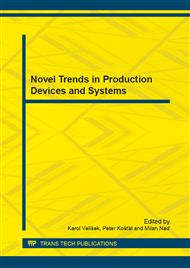p.3
p.9
p.15
p.21
p.27
p.35
p.42
p.49
Holistic Analysis and Risk Assessment of an Industrial Organization Processes
Abstract:
In the paper there is presented a new holistic approach to an analysis and assessment of organization processes risks by an application of dynamic modelling. It relates to a procedure, allowing to make provision for and to ensure, in addition to characteristic mutual relationship in organization processes with partners, also their dynamics and indefiniteness of the environment, multicriterial assessment of processes, and a general optimization from a point of defined indicators, an aggregate analyses and assessment of organization processes risks. By help of such process there are firstly optimized all process variants of organisation. We can consider this as an added value, because the manager is disposing with results of holistic analysis and assessment of organization and process risks that means gaining of reliable information about potential risks (threats and opportunities) of an organization processes and resulting to some consequences including the opportunities. The information gained in such way results in many cases in a draft of new variants (innovations) of organization processes, by which the identified and evaluated risks are eliminated or application of an efficient strategies suggestion for their elimination. Holistic approach to an organization processes modelling has been applied on some selected manufacturing organizations, resulting in reliable results of risk analyses and assessment.
Info:
Periodical:
Pages:
21-26
Citation:
Online since:
January 2014
Authors:
Keywords:
Price:
Сopyright:
© 2014 Trans Tech Publications Ltd. All Rights Reserved
Share:
Citation:


